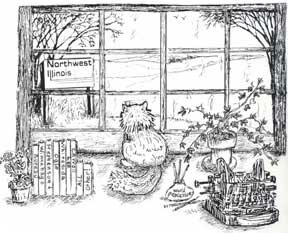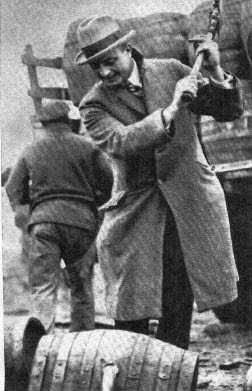
Discover rewarding casino experiences. 

Please Don't Quote Me News was the usual in area newspapers in 1929, eighty-one years ago names, places, events had been read often and since many times. They became familiar. Nationally, the news might have said this: Arabs attack Jews in Palestine in dispute over Wailing Wall. Politician, Secretary of Interior, convicted of taking $100,000 bribe. Trotsky expelled from USSR. Pope Pius XI leaves Vatican for first time. Dictatorship established in Yugoslavia. |
In the rotogravure section you might see Lt. Jimmy Doolittle beside a plane, his helmet goggles pushed onto his head after flying strictly on instruments. Leggy chorus girls in Dutch costumes just tapping out to “Tiptoe Through the Tulips.” Stardust and Singin’ in the Rain became popular for years. A monoplane flew 150 hours non-stop, re-fueling in the air. The Empire State Building was begun and would appear regularly in the sepia-toned section many times before completion in two years. Sound in the movies finally put an end to silent pictures, a Mickey Mouse musical assisting in the process, “Pandora’s Box.” What else was news in 1929? In the Sports section Bobby Jones won the U.S. Open golf tournament. National League Philadelphia beat the Chicago Cubs in the World Series, 4-1! Georgia Tech had won the Rose Bowl over California, 8-70, what an eventful year, ‘29. In October, the 28th, Wall Street crashed and a global economic crisis took place to last many years. The U.S. Securities plunged $26 billions worth. The Depression began. Making headlines earlier in the year was the St. Valentine’s Day Massacre in Chicago, gangsters murdering a rival gang in a garage. Gang wars, crime, robberies, bank hold-ups, prostitution, illegal liquor were all part of the news those days during Prohibition, already ten years old by then. Even with the mass murder in Chicago it was newsworthy in Stephenson County when a large still was raided north of Pearl City in late August, 1929. It was pretty close to home. “The Freeport Journal Standard” ran a large picture of a group of men standing on two levels with a ladder or steps between. Their names were familiar as law officers. Beside the photo were bold headlines, “Huge Distillery Uncovered by County Raiders.” A combined force of county deputies and Freeport policemen had surprised the illegal “moonshine” makers set up in a large barn on the “Flynn Farm” three miles north of Pearl City and three miles south of Rt. 5, now Rt. 20, on Rt. 73, present day. Stephenson County Sheriff, J.G. Hayes had been tipped off that something was going on at the farm ... Two many suspicious trucks coming in and out of the barn about a hundred yards back from the highway. He assigned Elmer Kelley and Harold Vere to investigate. They planned their strategy and about a week before the raid hid in tall grass at night surrounding the barn and outbuildings to watch the traffic that regularly appeared. One night as they lay in the weeds the wind was blowing from the barn and they were nearly overcome with the heavy, sweet odor emanating from the chimney atop the roof. They wished they’d had gas masks. This incident was recalled later when the so-called renter of the property, Everett Flynn was questioned about the lessees of the barn. “Who were they and what were they doing?” He was quizzed. He merely smiled and said he didn’t know to both questions and then laughed. How could he have not known with the smell so strong, they wondered when to them a half a mile away it was evident. Flynn had been arrested at a church party in Lena as the raid was being conducted. He and his newly acquired wife had been followed to the party, he arrested and put in the Lena jail. The wife was thought to have had no part in the scheme. They had lived at the place for only a few months. The raid on the barn was simple and efficient; smash in the large doors, guns drawn, subdue those inside and search the premises to take an inventory for evidence to present in court to convict the makers of the illegal whiskey. This was done about 8:00 P.M. on that August night. The door crashed back to find only one man who was at work making himself a bed out of empty sugar sacks, the sugar, the key ingredient in making the whiskey. He gave his name as Paul Santos, 50, of Freeport. He was in charge of the operation; cooking the mash, the sugar concoction that was used during Prohibition to make illegal moonshine, hootch, booze, etc. It filled the need for liquor in that illegal time and avoided taxes in the legal times of selling alcohol. As Santos was being questioned, the large doors swung back and a new ton and a half Chevrolet truck, grinding its gears came laboring through. The driver was a “short, stocky Italian” who gave his name as Joe Ferraro, 33, Rockford. He claimed he was a tinner but had no idea of what was going on in the barn. A man had asked him to make a delivery there and that afternoon had driven past the farm to show him where to make stop. Nothing more, he said in a marked accent. He was handcuffed to a post while the group on lawmen began searching the barn and taking inventory of its contents. Much remodeling had been done to the barn. The hay loft floor and joists had been removed with scaffolding put all around, a wood platform built on it in order to walk around the top of the huge copper vats that filled the floor. There were six of them, ten feet high and ten feet across. Four of them were “cooking,” lively bubbling; one was in the process of being readied and the last was idle. It was estimated that at least 46,000 gallons of mash was cooking 46,000 gallons! A copper rectifier extended through the roof 35 feet. It was painted black above the shingles to help “disguise” it being copper, a give away. It was next to a 60 horsepower steam boiler eight feet high. Miscellaneous material and equipment were checked such as a large iron water tank, centrifugal pump, two quarter horsepower electric motors, pressure pumps, 125 hundred pound sacks of sugar, ten five-gallon cans of finished whiskey, hose, ladders, scaffolding, etc. The size of the operation caused much speculation as to how much alcohol could be produced by such huge equipment. It was the largest still found in Stephenson County and later in the article it was said, “in the State of Illinois.” A “Freeport Journal Standard” reporter and staff photographer arrived during the raid and were eyewitness to the raid and reported it first hand. The article that appeared in the August 28th issue, FJS, 1929 was sent to PDQ Me by Jerry Strohecker, Pearl City, a dedicated history reader and scrapbook keeper of such interesting articles. Thanks and keep them coming! The item went on to say that although “the barn’s equipment might not be as expensive as the ‘alky cooking plant’ recently discovered on East Iroquois St. in Freeport, it was much larger in size and capacity.” In that era distilleries were found in town and country. The picture with this is from an unknown source, but familiar in topic. Two officers were left to guard the barn while a dray was hired to haul away the sugar, valuable evidence. Ferraro’s “new” truck was locked in a local garage for safe-keeping. The next day, States’ Attorney L.F. Reinhold came to the barn to inspect the site of the still, commending the officers on the successful outcome. It was expected that a preliminary hearing would be given the prisoners by Justice of the Peace Allen Janssen who also had issued the search warrant.
Several other distilleries were discovered over the years in our area. They vied with the ordinary news that readers sought to learn about the goings on of their neighbors. Those personal items gave meaning to their lives, it was the basic, the fundamental blocks on which everyday life was built. It kept people grounded especially in the years to come in the decade-long deep Depression and the World War that followed. In the same issue, August 28, 1929 we received the reminder that life went on and pretty much does in similar ways today: • The Warren Fair, Thomson Melon Days, Old Seniors Picnic, Mt. Morris will be celebrated Thursday. • F.G. Peters Music Co., Lanark, sold a radio to Mr. & Mrs. Tom Fossett for keeping up with the news. • Harry Shiley had the misfortune to lose a valuable hog weighing 500 pounds due to the intense August heat. • Frances Garner and daughter Barbara are visiting her brother and family, the Cousers’. • Fuhreman’s Canning Co. will begin canning sweet corn this week. Five hundred acres have been planted. And time marched on.
|




